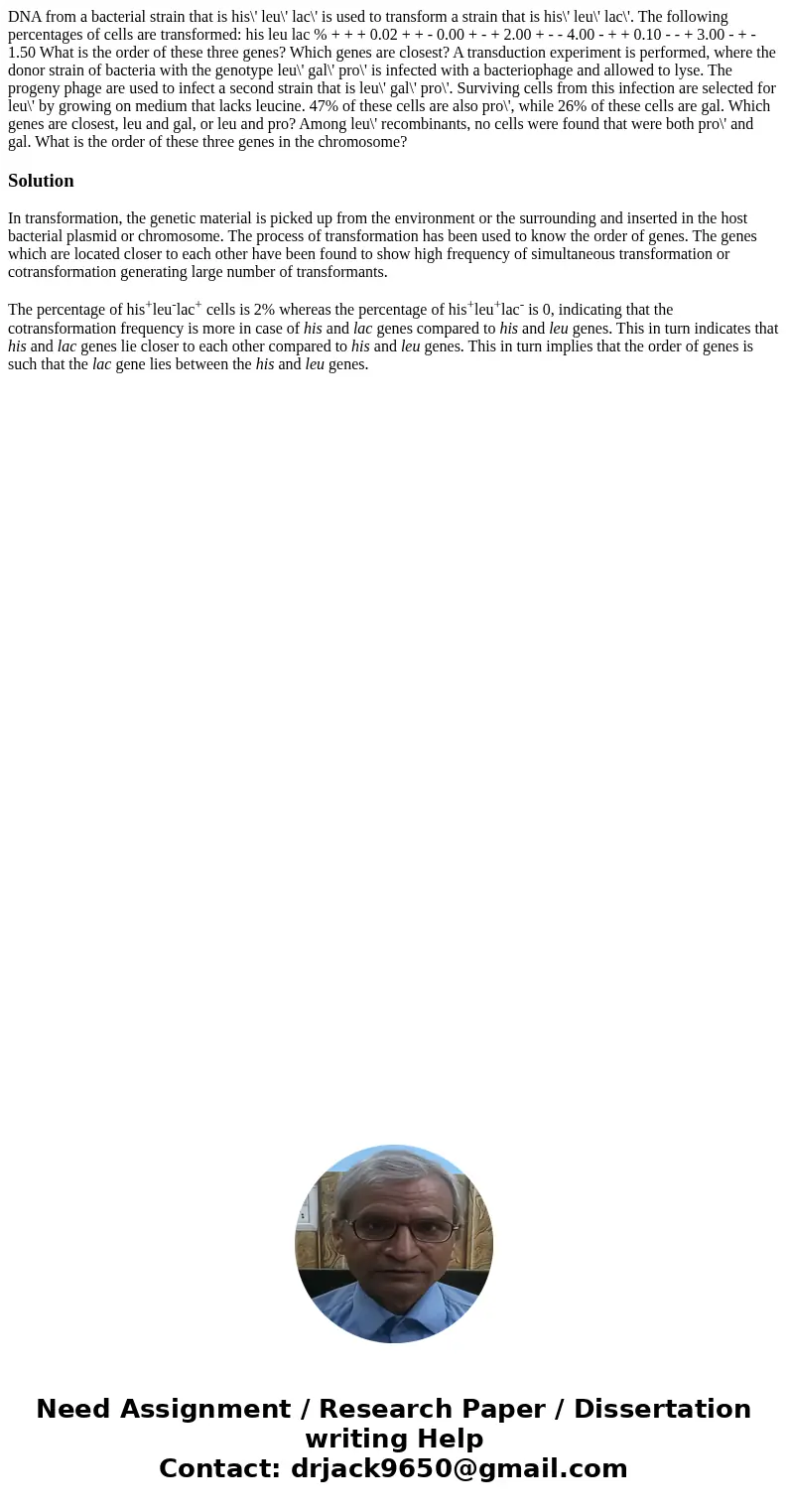DNA from a bacterial strain that is his leu lac is used to t
Solution
In transformation, the genetic material is picked up from the environment or the surrounding and inserted in the host bacterial plasmid or chromosome. The process of transformation has been used to know the order of genes. The genes which are located closer to each other have been found to show high frequency of simultaneous transformation or cotransformation generating large number of transformants.
The percentage of his+leu-lac+ cells is 2% whereas the percentage of his+leu+lac- is 0, indicating that the cotransformation frequency is more in case of his and lac genes compared to his and leu genes. This in turn indicates that his and lac genes lie closer to each other compared to his and leu genes. This in turn implies that the order of genes is such that the lac gene lies between the his and leu genes.

 Homework Sourse
Homework Sourse